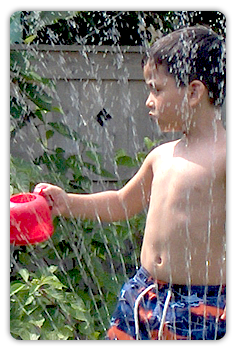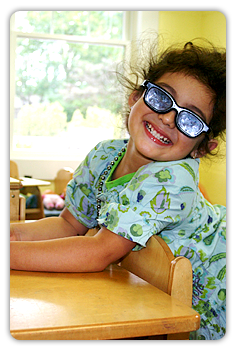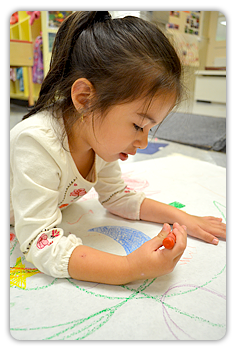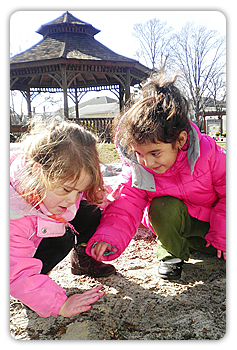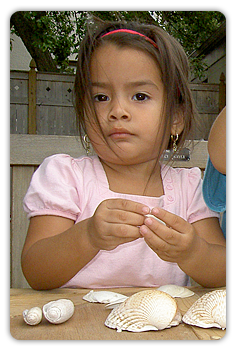@import((EC3))
Toddlers | 2 Year Old | 3 Year Old | Pre-K
The Three-Year-Old Class

The three-year-old child is starting to realize that the world does not revolve around him. Children of this age are discovering a new sense of self. Along with this discovery comes an acute need to understand the rules that govern the world and their place in it.
We believe that the role of the teacher in the classroom is to be the facilitator and collaborator in the learning process. Learning takes place in the interaction between the child with teachers and other children in an environment that functions as a third teacher.
The classroom offers different centers where the children can work in developing and mastering particular skills while pursuing their own interests. Children plan and choose work area from planning board (High Scope). This decision involves complex thinking and includes the use of symbols, a cornerstone for reading and writing. Learning to make choices, to wait, and to take turns are important social skills necessary for success.
Blocks provide the opportunity for cooperative work, scaffolding, and problem solving and conflict resolution.
- Learns through play and exploring using all senses
- Communicates in simple sentences, can initiate conversations and wants to talk about thing that interest him
- Begins friendships
- Can run, climb, and move with increased confidence
- More independent but still needs adults for security as he explores and plays
We believe that the role of the teacher in the classroom is to be the facilitator and collaborator in the learning process. Learning takes place in the interaction between the child with teachers and other children in an environment that functions as a third teacher.
The classroom offers different centers where the children can work in developing and mastering particular skills while pursuing their own interests. Children plan and choose work area from planning board (High Scope). This decision involves complex thinking and includes the use of symbols, a cornerstone for reading and writing. Learning to make choices, to wait, and to take turns are important social skills necessary for success.
CENTERS
Water and sand tables.
Volume, quantity, and weight, or the behavior of substances and matter are learned through direct experience.Table toys.
Puzzles, interlocking toys, matching games, legos, pegs and boards develop fine motor skills and hand-eye coordination. They help develop logical mathematical reasoning and at the same time provide multiple opportunities for social interaction and problem solving.Art table
The child can experience the aesthetic pleasure of painting, drawing, modeling with clay, playdough or by creating a collage.Block area
The child learns to think creatively, to recognize cause and effect sequences. He learns about structures, balance, size, shapes and the concepts of spatial relations. This will provide a foundation for the understanding of abstract Math.Blocks provide the opportunity for cooperative work, scaffolding, and problem solving and conflict resolution.
Family center
Pretend and Dramatic Play is probably the most important activity in which the three year old engages. The child can here experiment with roles. Pretend play involves many areas of the brain. It requires the ability to transform objects and actions symbolically, role taking, promotes language competence and helps in the development of a sense of self in relation to others. By taking the role of another person or animal the child learns about the world.Library
Reading occupies a special place in our program and takes place throughout the day in small and large groups. Reading and listening to stories and poems opens the imagination, bringing a sense of wonder, often touching upon issues that are important on an intellectual or emotional level, promotes language development and helps create lifelong readers.GOALS for Three-year children
- Basis of literacy (understanding use of symbols)
- Language skills ( vocabulary and rules of grammar)
- Foundations of Math and Science (Patterns, Seriation, one to one correspondence)
- Learn to solve problems and tolerate failure.
- Learn to get along with others.
- Develop emotional well-being.
- Master their environment.
- Sharing, waiting, taking turns.
- Self-sufficiency and independence.
